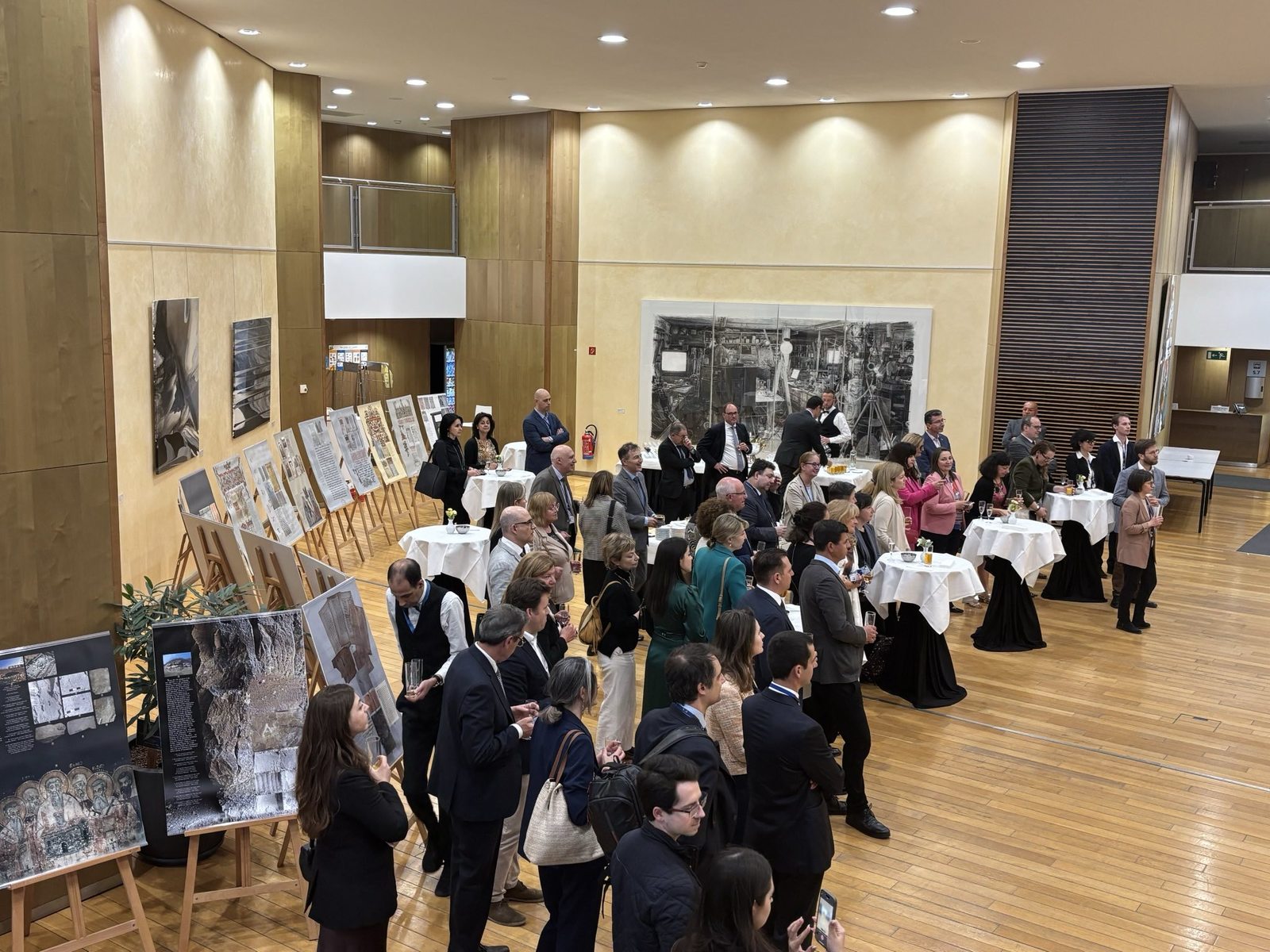The Exhibition "Alphabet and History" Visits the European Commission in Brussels on the Occasion of May 24
On the occasion of May 24 - the Day of the Holy Brothers Cyril and Methodius, of the Bulgarian Alphabet, Education and Culture and of Slavic Literature, the mobile exhibition "Alphabet and History" was opened at the EC headquarters in Brussels, provided with the kind assistance of the State Institute for Culture under the Minister of Foreign Affairs. The event took place at the initiative of the European Commissioner Ekaterina Zaharieva and became a special occasion to pay tribute to the Cyrillic alphabet - one of the three official alphabets of the European Union.
The exhibition, which will remain in Brussels for another two weeks, was realized by scientists from the Center for Slavic-Byzantine Studies "Prof. Ivan Duychev" at the Sofia University "St. Kliment Ohridski" and presents the importance of writing as the basis of the cultural memory and identity of the Slavic peoples. The author of the exhibition is Prof. Vasya Velinova, PhD, and scientific consultants are Art. Corresponding author Aksinia Djurova and Prof. Dr. Kazimir Popkonstantinov. Materials from the archive of the Ivan Duychev Center, as well as from a number of Bulgarian and international libraries and book depositories, were used.
Through 24 panels, the audience has the opportunity to trace the historical development of the Glagolitic and Cyrillic scripts - from their creation by the holy brothers Cyril and Methodius to their role as a cultural instrument in the Middle Ages and modern times. The exhibition emphasizes the key contribution of the First and Second Bulgarian Kingdoms in establishing the Cyrillic script as a pan-Slavic writing system.
The Cyrillic script is not only a Bulgarian value - it is an official alphabet in 10 countries and since 2007, with Bulgaria's accession to the EU, it has been the third official alphabet of the Union, along with the Latin and Greek alphabets. Symbolically, every banknote in the Eurozone also bears a Cyrillic inscription, accessible to all 450 million EU citizens.
The exhibition "Alphabet and History", which is part of the "Traveling Exhibitions" program of the State Institute for Culture, is not just a look at the past - it is an invitation to understand the written word as a bearer of cultural identity and a means of promoting mutual understanding between the peoples of Europe.




